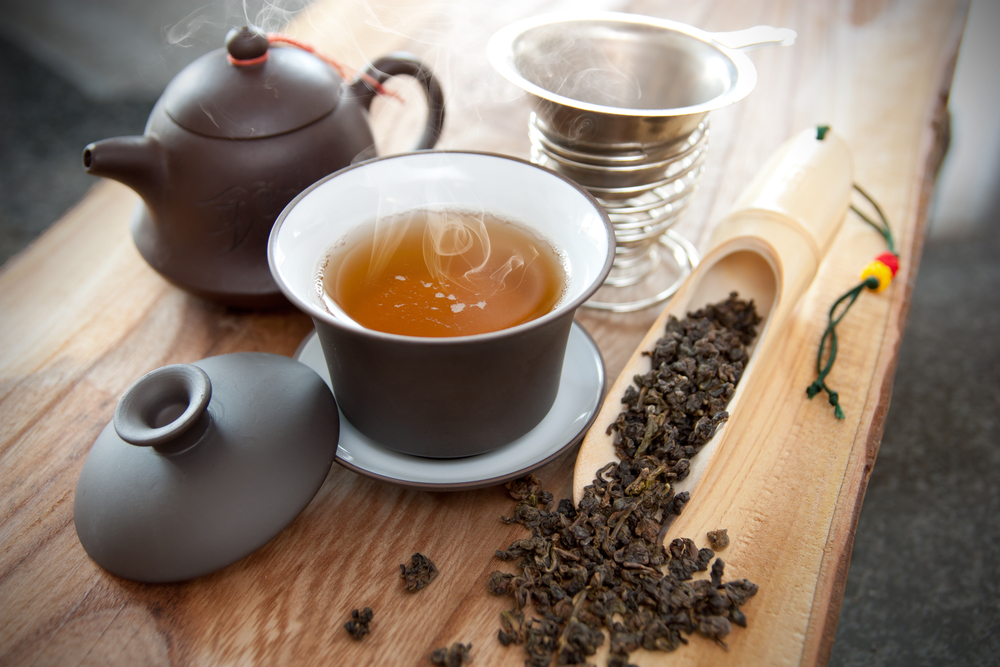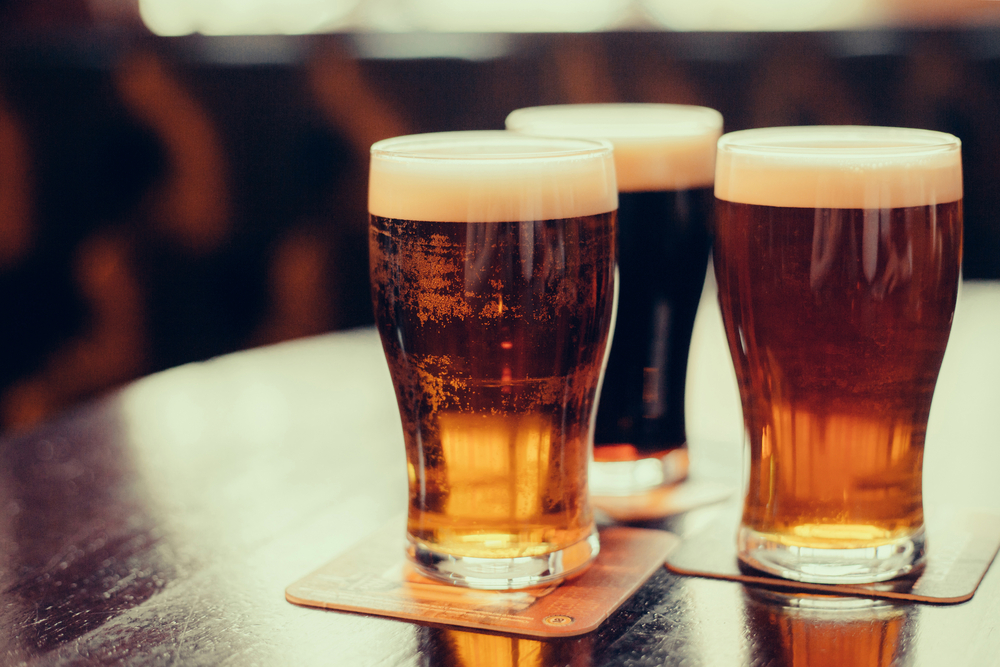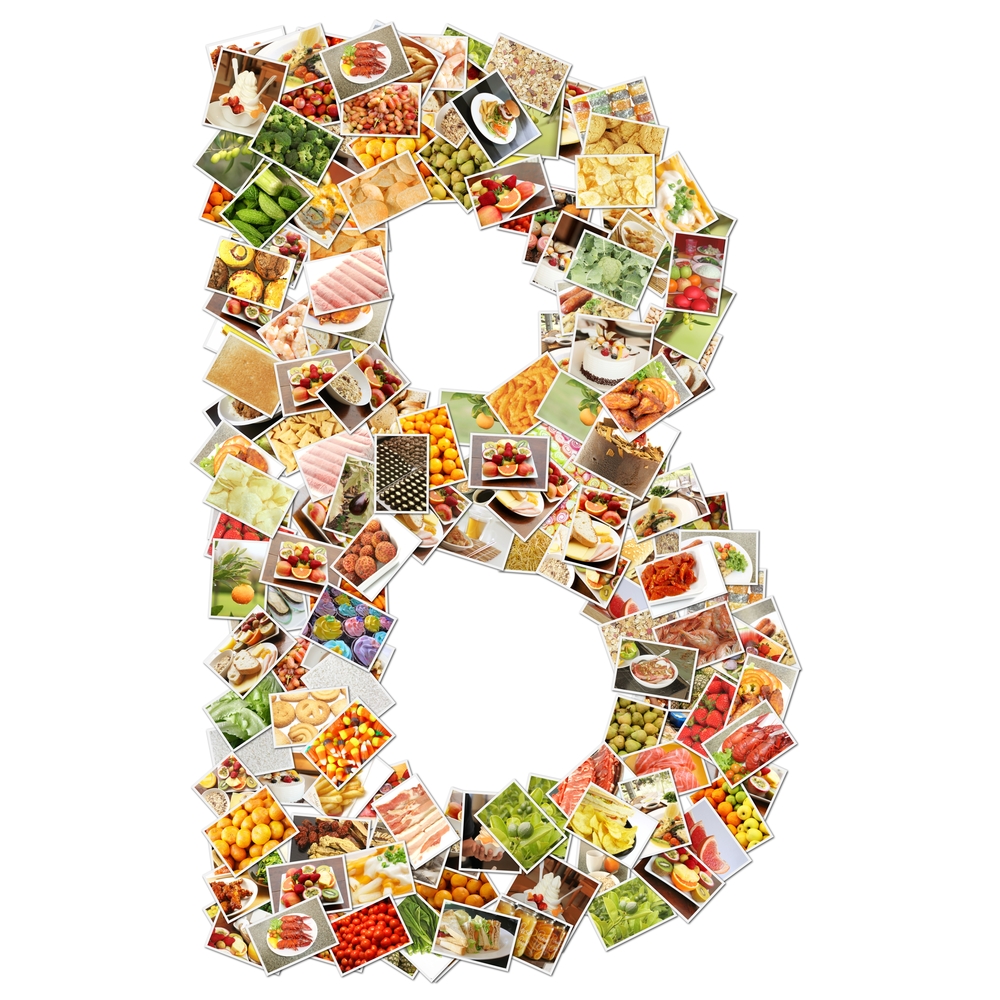I have always been a tea lover, and Earl Grey tea has always been one of my favorites. It is a classic black tea infused with bergamot oil, giving it a unique and refreshing taste.
But what exactly does Earl Grey tea taste like? In this article, I will explore the flavor profile of Earl Grey tea and answer some frequently asked questions about this beloved beverage.
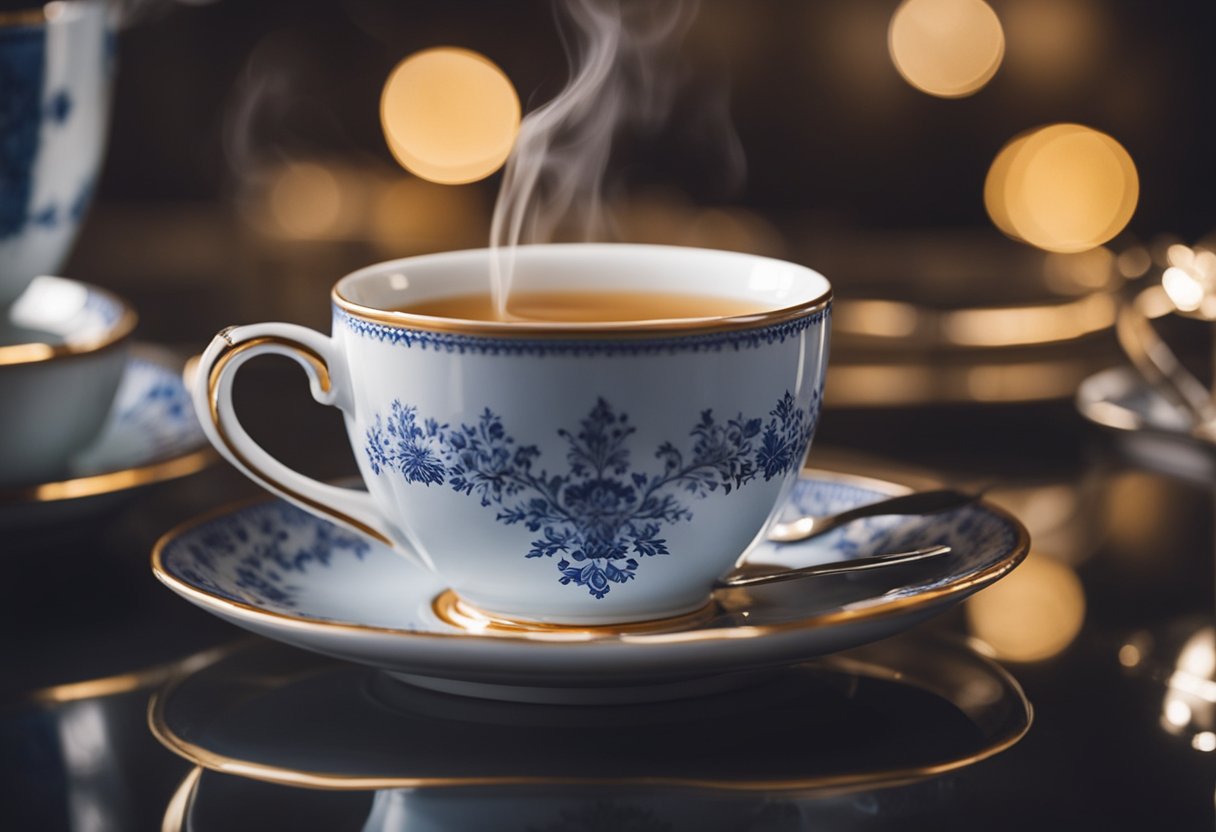
Earl Grey tea is believed to have originated in England in the 1800s. It is named after Charles Grey, the 2nd Earl Grey and former Prime Minister of the United Kingdom.
The tea is made by blending black tea leaves with bergamot oil, which is extracted from the rind of the bergamot orange. This gives the tea a distinct citrusy flavor and aroma that is both refreshing and soothing.
Key Takeaways
- Earl Grey tea is a classic black tea infused with bergamot oil, giving it a unique and refreshing taste.
- The tea is named after Charles Grey, the 2nd Earl Grey and former Prime Minister of the United Kingdom.
- Earl Grey tea has a distinct citrusy flavor and aroma that is both refreshing and soothing.
Origins of Earl Grey Tea
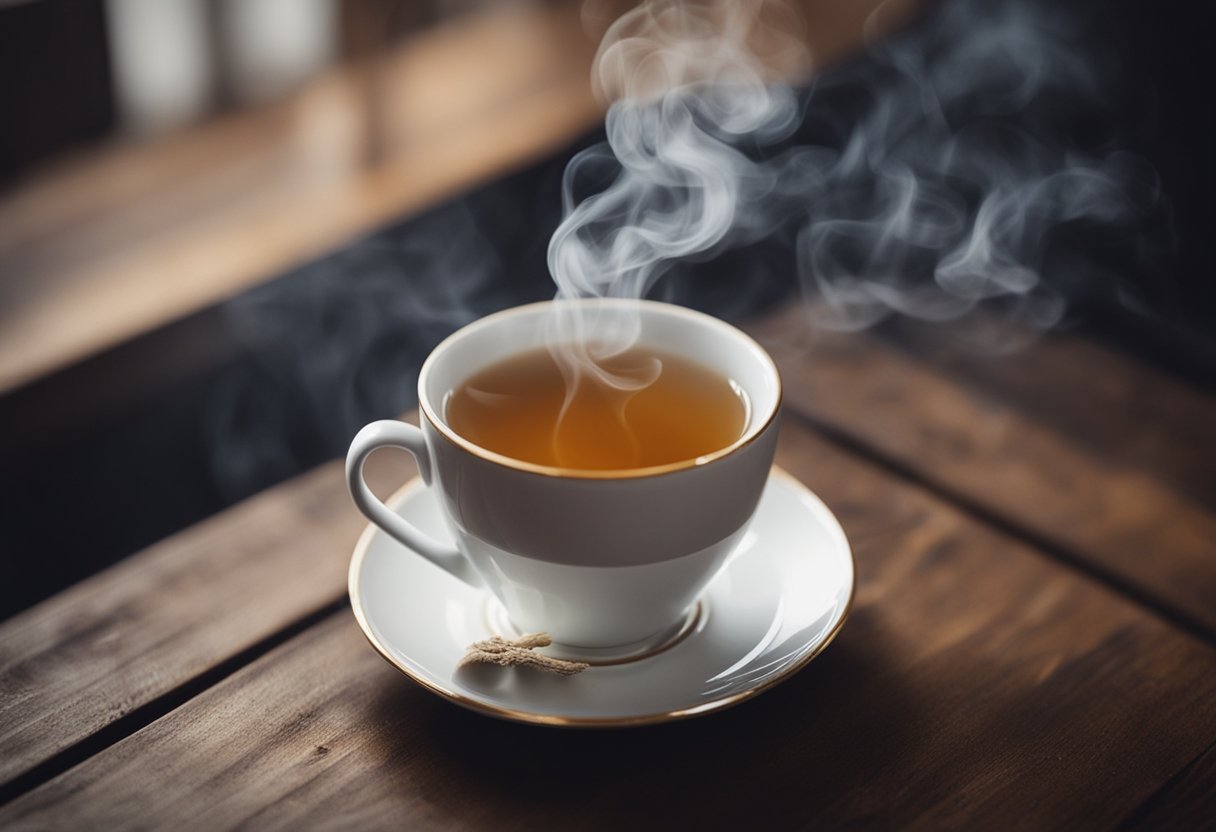
Earl Grey tea is a black tea blend that is flavored with bergamot oil. The history of this tea is shrouded in mystery and intrigue, but there are a few stories that are commonly told about its origins.
One story is that the tea was named after Charles Grey, the 2nd Earl Grey and a former British Prime Minister. According to this story, a Chinese mandarin presented Lord Grey with a gift of tea flavored with bergamot oil.
Lord Grey enjoyed the tea so much that he asked his tea merchants in London to recreate it for him. The blend became so popular that it was eventually named after Lord Grey himself.
Another story is that the tea was created by accident. According to this story, a British diplomat named Earl Grey was given the recipe for the tea by a Chinese mandarin as a gift.
The recipe called for bergamot oil to be added to the tea in order to mask the taste of minerals in the water. Earl Grey brought the recipe back to England and gave it to his tea merchants, who began to sell the blend under his name.
Regardless of which story is true, it is clear that Earl Grey tea has a long and interesting history. The earliest reference to tea flavored with bergamot dates back to 1824, but it is unclear whether this tea was actually Earl Grey tea or simply a similar blend.
Today, Earl Grey tea is one of the most popular teas in the world, enjoyed by millions of people every day.
Ingredients of Earl Grey Tea
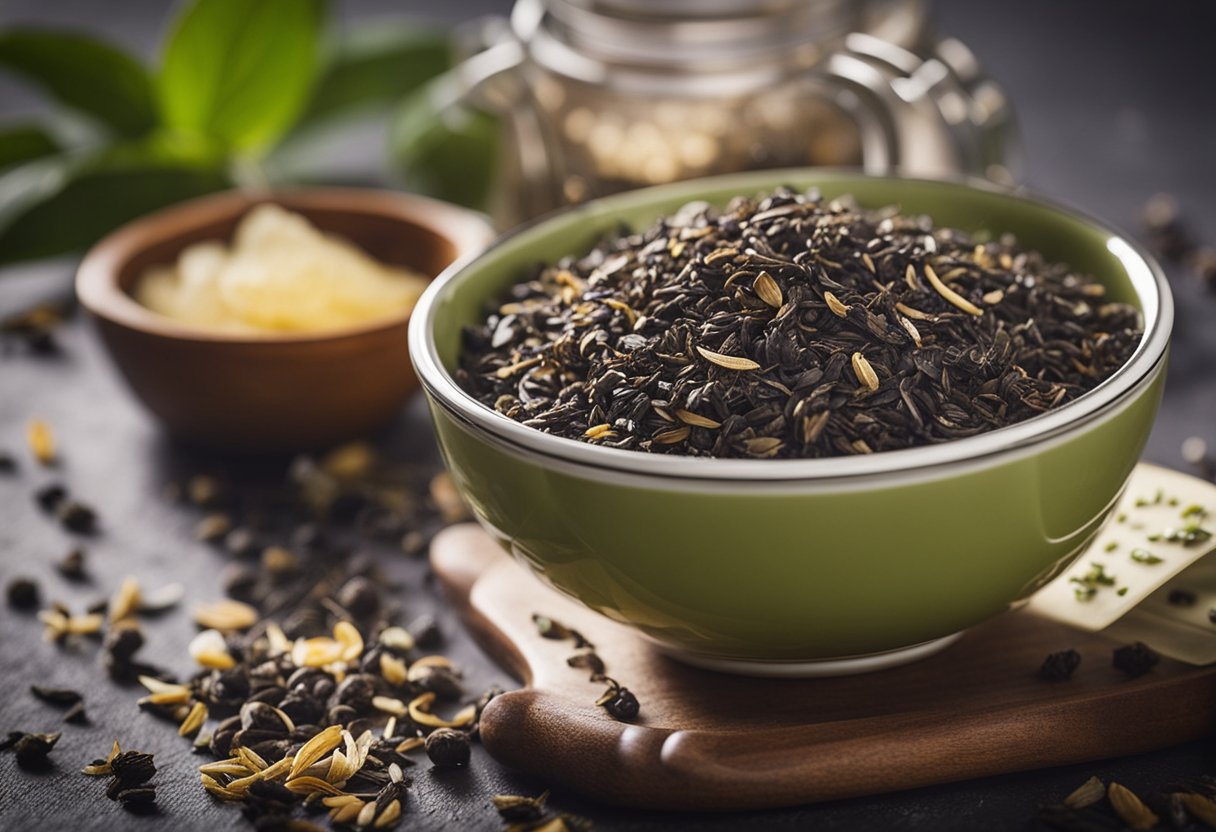
As a tea lover, I am always curious about the ingredients that make up my favorite blends. Earl Grey tea is no exception. So, let’s take a closer look at the ingredients that make up this classic tea.
Earl Grey tea is a type of black tea that is flavored with bergamot oil, a fragrant citrus fruit.
The tea leaves used in Earl Grey tea are typically from the Camellia sinensis plant, which is the same plant used to make other types of black tea.
Bergamot is a type of citrus fruit that is grown primarily in Italy. The fruit is a cross between a lemon and an orange and has a distinctive flavor and aroma.
Bergamot oranges are typically used to extract the oil that is used to flavor Earl Grey tea.
Bergamot oil is extracted from the rind of the bergamot orange. The oil is then added to the tea leaves to give Earl Grey tea its unique flavor.
The amount of bergamot oil used can vary depending on the brand and the recipe, but typically it is a small amount that is just enough to give the tea a hint of citrus flavor.
In summary, the main ingredients of Earl Grey tea are black tea, bergamot oil, and tea leaves from the Camellia sinensis plant. The addition of bergamot oil gives Earl Grey tea its distinctive citrus flavor and aroma.
Flavor Profile of Earl Grey Tea
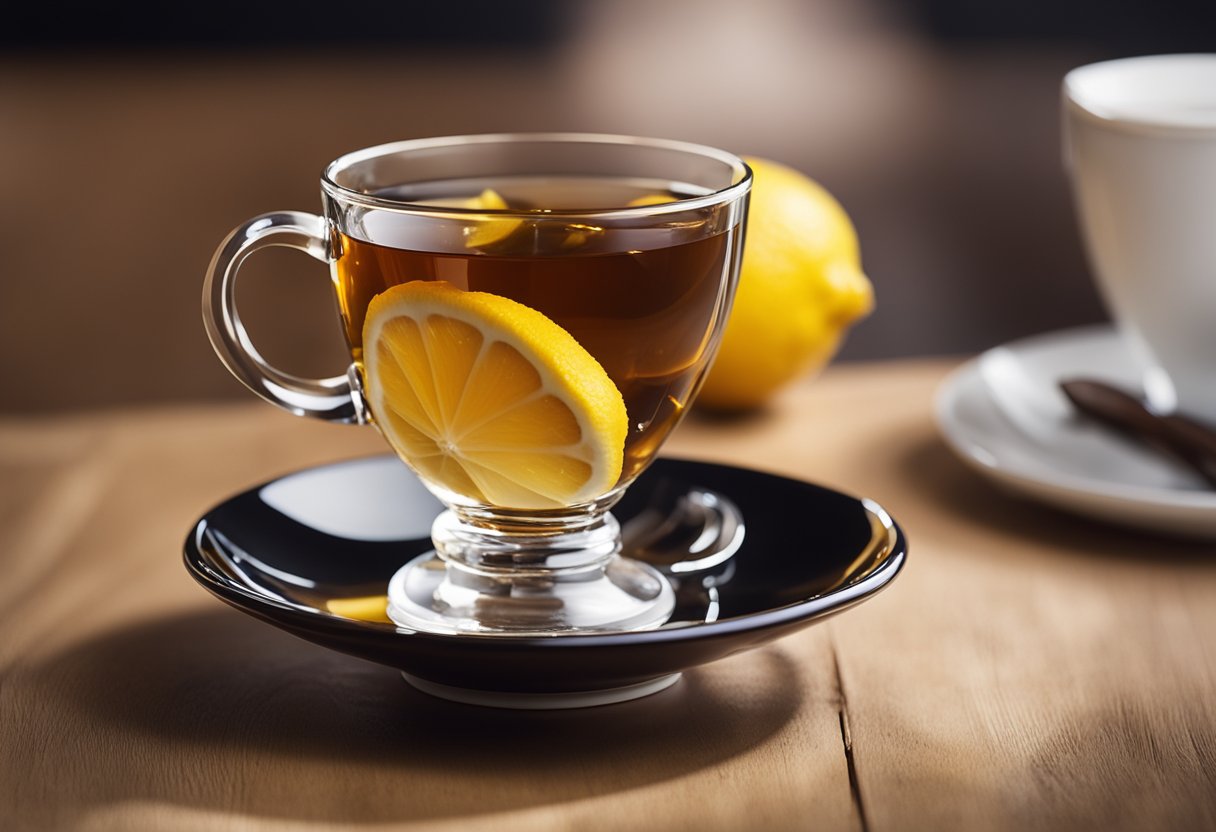
Earl Grey tea has a distinct and refreshing flavor profile that has made it a favorite among tea drinkers for centuries. As a black tea, it has a bold and robust taste that is balanced by the citrusy notes of bergamot oil.
The bergamot oil is what sets Earl Grey apart from other black teas. It is extracted from the rind of bergamot oranges, which are a mix between lemons and bitter oranges.
The oil has a unique aroma that is both sweet and sour, with hints of lemon, lime, and grapefruit.
When brewed, Earl Grey tea has a smooth and malty flavor that is complemented by the citrusy taste of bergamot.
The tea also has subtle floral notes that make it even more enjoyable to drink. The tea’s flavor profile can be described as bold, with a slight astringent and nutty flavor that is balanced by the citrus and floral notes.
The bitterness of Earl Grey tea is moderate and not overpowering, making it a great tea to enjoy on its own or with a variety of foods.
The tea can be enjoyed hot or cold and is often served with milk and sugar, although it can also be enjoyed plain.
Overall, the flavor profile of Earl Grey tea is complex and balanced, with a unique combination of citrus, floral, and nutty flavors that make it a favorite among tea lovers.
Its smooth and bold flavor, combined with the refreshing aroma of bergamot, make it a perfect tea to enjoy any time of day.
Brewing and Serving Earl Grey Tea
When it comes to brewing Earl Grey tea, there are a few key things to keep in mind to ensure that you get the best possible flavor out of your tea. Here are some tips to help you brew and serve Earl Grey tea like a pro:
Water Temperature
The first thing to consider when brewing Earl Grey tea is the temperature of the water. It’s important to use water that is hot enough to steep the tea properly, but not so hot that it burns the leaves and makes the tea taste bitter.
I recommend using water that is around 200 degrees Fahrenheit (93 degrees Celsius) for the best results.
Preparing the Tea
Whether you’re using loose leaf tea or tea bags, it’s important to measure out the right amount of tea for each cup. I recommend using one teaspoon of loose tea or one tea bag per cup of water.
If you like your tea stronger, you can add an extra teaspoon of tea or another tea bag.
Teapot or Mug
When it comes to brewing Earl Grey tea, you have a few options for the vessel you use. You can use a teapot if you’re making tea for a group, or you can use a mug if you’re making tea for yourself.
If you’re using a teapot, make sure it’s clean and free of any residual flavors from previous teas.
Milk and Sugar
Some people like to add milk and sugar to their Earl Grey tea, while others prefer to drink it plain. If you’re going to add milk and sugar, I recommend adding them after the tea has steeped for a few minutes.
This will give the tea time to develop its full flavor before you add anything to it.
Brewing Time
The ideal brewing time for Earl Grey tea will depend on your personal taste preferences. I recommend steeping the tea for 3-5 minutes for a medium strength tea, or up to 7 minutes if you prefer a stronger tea.
Be careful not to over-steep the tea, as this can make it taste bitter.
With these tips in mind, you should be able to brew and serve Earl Grey tea like a pro. Remember to experiment with different brewing times and ratios of tea to water to find your perfect cup of Earl Grey tea.
Varieties of Earl Grey Tea
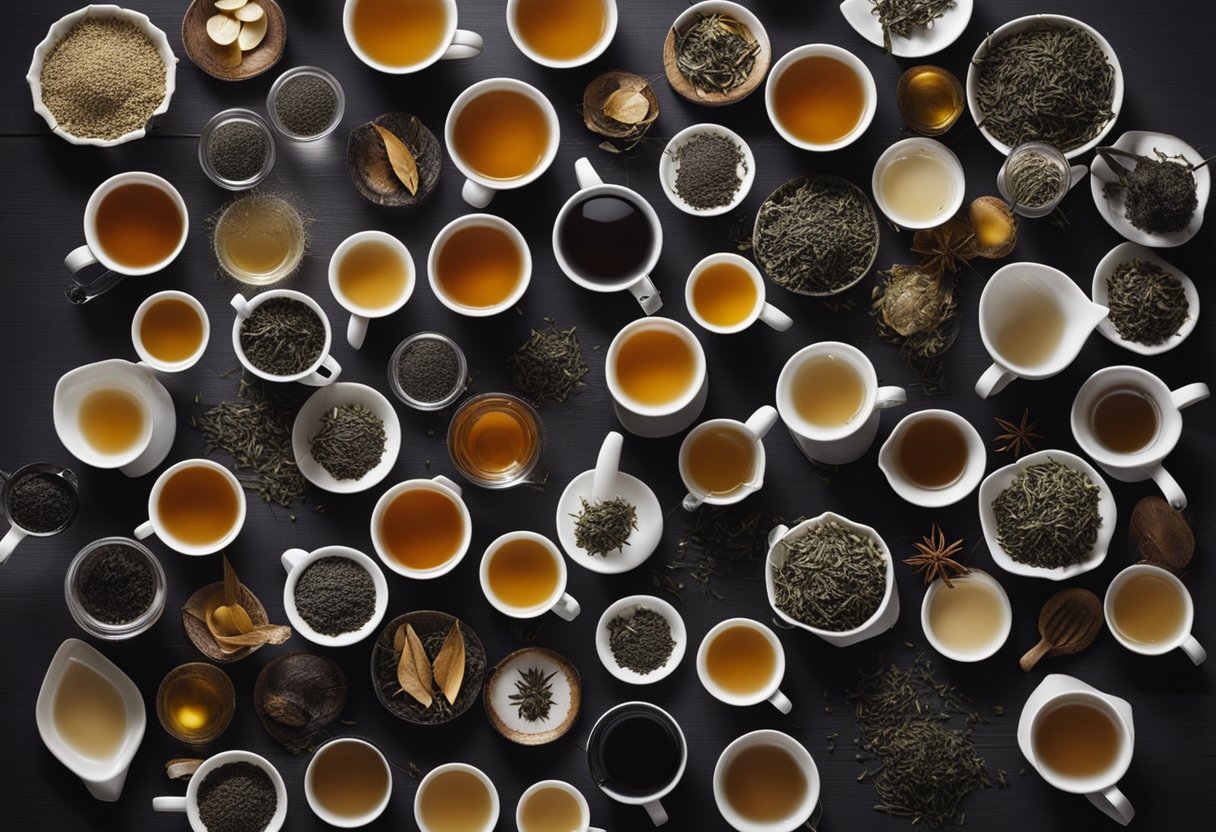
As one of the most popular teas in the West, Earl Grey tea has been blended and flavored in many different ways. Here are some of the varieties of Earl Grey tea that you might come across:
- Traditional Blend: The traditional Earl Grey tea is made from black tea leaves and flavored with bergamot oil. It has a citrusy flavor with a slight bitterness and is usually served with milk and sugar.
- Green Tea Earl Grey: Green tea Earl Grey is made by replacing the black tea leaves with green tea leaves. The result is a lighter tea with a more delicate flavor and less bitterness.
- Lady Grey: Lady Grey is a variation of Earl Grey tea that is made with black tea leaves, bergamot oil, and additional ingredients such as lemon peel and orange peel. It has a slightly sweeter and more floral flavor than traditional Earl Grey tea.
- Flavored Earl Grey: Flavored Earl Grey teas are made by adding additional flavors to the traditional blend. Some popular flavors include vanilla, lavender, and rose.
- Oolong Tea Earl Grey: Oolong tea Earl Grey is made by using oolong tea leaves instead of black tea leaves. It has a more complex flavor with hints of fruit and flowers.
- White Tea Earl Grey: White tea Earl Grey is made by using white tea leaves instead of black tea leaves. It has a lighter flavor with a subtle sweetness and floral notes.
- English Breakfast Tea Earl Grey: English Breakfast Tea Earl Grey is a blend of traditional English Breakfast tea and Earl Grey tea. It has a strong, robust flavor with a citrusy twist.
- London Fog: London Fog is a popular drink made with Earl Grey tea, steamed milk, and vanilla syrup. It has a creamy, sweet flavor with a hint of bergamot.
Overall, there are many different varieties of Earl Grey tea to choose from, each with its own unique flavor profile.
Whether you prefer a traditional blend or a flavored variation, there is an Earl Grey tea out there for everyone to enjoy.
Health Benefits of Earl Grey Tea
I love drinking Earl Grey tea not only for its distinct flavor but also for its many health benefits. Here are some of the reasons why you should consider adding Earl Grey tea to your daily routine:
Contains Caffeine
Earl Grey tea is made from black tea leaves, which naturally contain caffeine. Caffeine is known to provide a boost of energy and improve mental alertness.
However, it’s important to consume caffeine in moderation, as too much can cause jitters, anxiety, and difficulty sleeping.
Rich in Antioxidants
Earl Grey tea is also rich in antioxidants, which help protect the body from damage caused by harmful molecules called free radicals.
Antioxidants can also help reduce inflammation and lower the risk of chronic diseases such as heart disease, diabetes, and cancer.
Contains Tannins
Tannins are a type of polyphenol found in tea leaves, and Earl Grey tea is no exception. Tannins can have a number of health benefits, including improving digestion and reducing inflammation.
However, tannins can also interfere with the absorption of certain nutrients, so it’s important to consume tea in moderation and not with every meal.
Contains Bergamot Essential Oil
One of the unique ingredients in Earl Grey tea is bergamot essential oil, which is derived from the rind of the bergamot orange.
This oil has been shown to have a number of health benefits, including reducing anxiety and improving mood.
However, it’s important to note that bergamot oil can also increase sensitivity to sunlight, so it’s important to use caution when consuming Earl Grey tea and spending time outdoors.
Promotes Dental Health
Drinking Earl Grey tea can also promote dental health. The fluoride found in tea leaves can help strengthen tooth enamel and prevent cavities.
Additionally, the polyphenols in tea can help reduce the amount of bacteria in the mouth, which can lead to fresher breath and a healthier mouth overall.
Provides an Energetic Boost
Finally, drinking Earl Grey tea can provide an energetic boost without the crash that often comes with other caffeinated beverages.
The combination of caffeine and other compounds in tea leaves can help improve mental focus and physical performance, making it a great choice for a mid-afternoon pick-me-up.
Overall, Earl Grey tea is not only delicious but also provides a number of health benefits. Whether you’re looking for an energy boost, a way to improve dental health, or a source of antioxidants, Earl Grey tea is a great choice.
Comparing Earl Grey Tea to Other Beverages
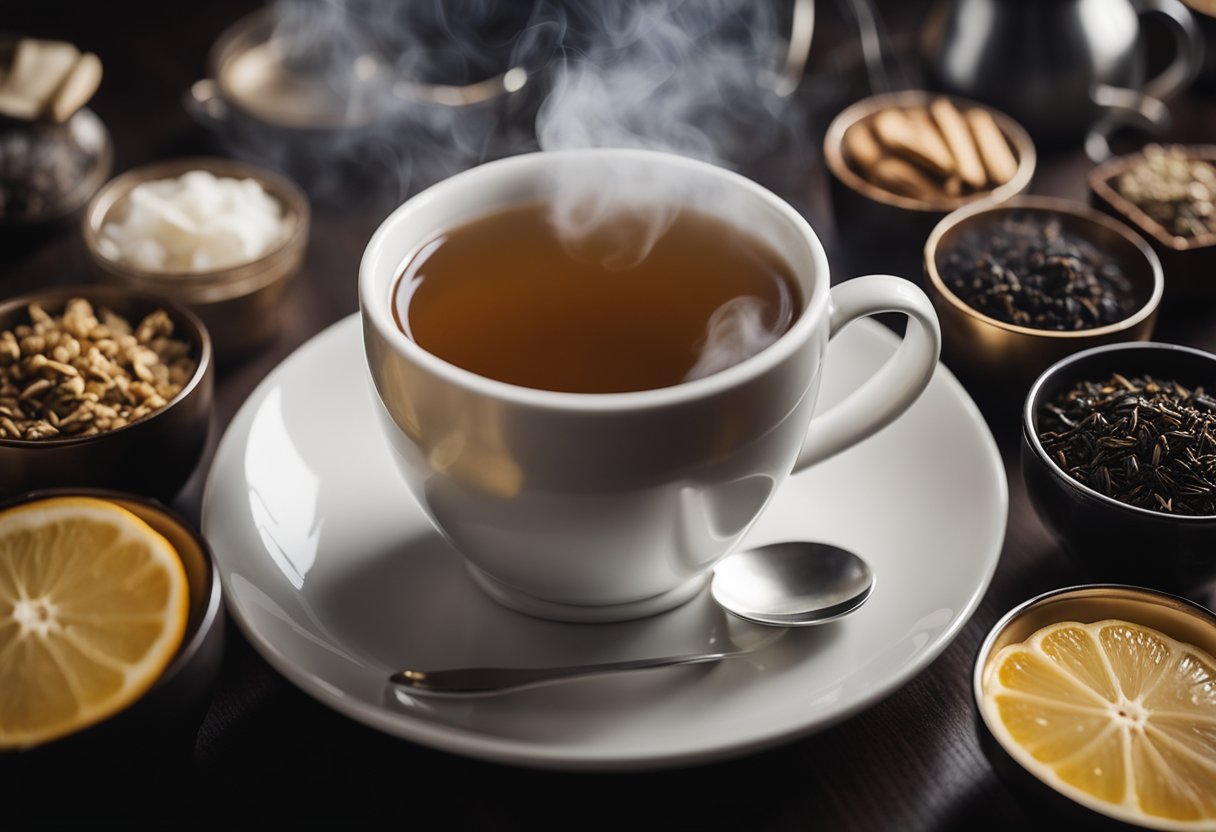
As a tea lover, I often get asked about the taste profile of Earl Grey tea and how it compares to other beverages. So, here’s my take on it.
Firstly, let’s compare Earl Grey tea to coffee. While both are popular morning beverages, they have distinct differences in taste. Earl Grey tea has a floral and citrusy flavor, thanks to the addition of bergamot oil.
On the other hand, coffee has a more robust and bitter taste profile. Additionally, Earl Grey tea has a lower caffeine content than coffee, making it a great alternative for those who want a milder caffeine kick.
When it comes to comparing Earl Grey tea to wine, the differences are even more pronounced. While wine has a complex flavor profile that varies depending on the grape variety, region, and vintage, Earl Grey tea has a more consistent taste.
However, like wine, the quality of Earl Grey tea can vary depending on the tea leaves used and the quality of bergamot oil added.
In terms of comparing Earl Grey tea to other drinkable beverages, such as water or juice, the taste profile is vastly different.
Earl Grey tea has a distinct flavor profile that sets it apart from other beverages. It’s a refreshing and soothing drink that’s perfect for any time of the day.
In conclusion, Earl Grey tea has a unique taste profile that sets it apart from other beverages. While it may not be everyone’s cup of tea, it’s definitely worth trying for those who enjoy a floral and citrusy flavor.
Earl Grey Tea in Popular Culture

Earl Grey tea has been featured in popular culture in various forms. From being a favorite of fictional characters to being a staple in tea culture, Earl Grey tea has made its mark in the world of entertainment and beyond.
One of the most famous references to Earl Grey tea is in the science-fiction television series Star Trek: The Next Generation. Captain Jean-Luc Picard, played by Patrick Stewart, is known for his love of Earl Grey tea.
In several episodes, he orders “Tea, Earl Grey, hot” from the ship’s replicator. This catchphrase has become iconic and is recognized by many fans of the show.
Earl Grey tea has also made appearances in literature. In the Harry Potter series, the character Professor Albus Dumbledore is known to enjoy a cup of Earl Grey tea.
In the novel The Picture of Dorian Gray by Oscar Wilde, the character Lord Henry Wotton is also a fan of the tea.
In the world of food and beverages, Earl Grey tea has been used as an ingredient in various dishes and drinks. Some chefs use it to add a unique flavor to desserts such as cakes and macarons.
It has also been used in cocktails and mocktails to add a citrusy note.
When it comes to the taste of Earl Grey tea, it is often described as having a bold and robust flavor with a subtle hint of citrus.
The bergamot oil that is added to the tea gives it a distinct aroma and taste that sets it apart from other black teas. While some people may find the taste of Earl Grey tea to be too strong, others enjoy its unique flavor profile.
In conclusion, Earl Grey tea has become a beloved beverage that has made its way into popular culture and beyond.
Its unique taste and aroma have made it a favorite of many tea drinkers, and its presence in literature and entertainment has solidified its place in popular culture.
Whether you love it or hate it, there’s no denying that Earl Grey tea has made its mark in the world.
Quality and Purchase of Earl Grey Tea
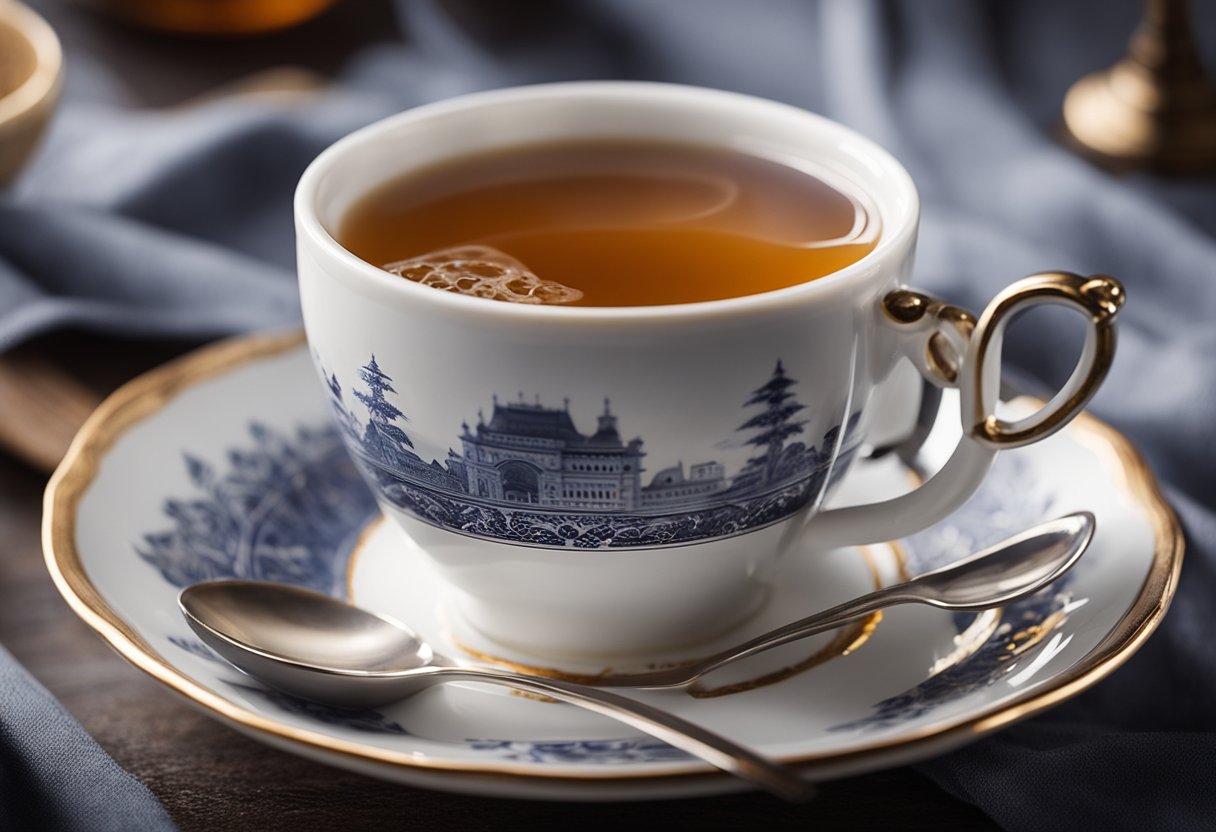
When it comes to purchasing Earl Grey tea, there are a few factors to consider to ensure that you are getting a high-quality product.
Firstly, it is important to choose loose-leaf tea over tea bags. Loose-leaf tea allows the tea leaves to expand and infuse more fully, resulting in a richer flavor.
Tea bags, on the other hand, often contain lower quality tea leaves that have been crushed into small pieces.
When it comes to brands, Twinings is a well-known and reputable producer of Earl Grey tea. However, it is also worth exploring other brands that specialize in high-quality teas.
In terms of the origin of the tea leaves, Earl Grey tea can be made from a variety of black tea types, including Kenya, Ceylon, Darjeeling, Keemun, Nilgiri, and Yunnan.
Each of these teas has its own unique flavor profile, so it is worth experimenting with different varieties to find your favorite.
It is also important to consider the quality of the tea leaves themselves. Look for teas made from whole tea leaves, rather than broken or fannings, which are lower quality.
Additionally, tea leaves that are harvested earlier in the season tend to have a more delicate and nuanced flavor than those harvested later.
When purchasing Earl Grey tea, it is also important to pay attention to the freshness of the tea leaves. Look for teas that are packaged in airtight containers to preserve their flavor and aroma.
If purchasing loose-leaf tea, consider buying smaller quantities to ensure that the tea is consumed while it is still fresh.
Overall, when purchasing Earl Grey tea, it is important to consider factors such as loose-leaf vs. tea bags, brand reputation, tea leaf origin and quality, and freshness to ensure that you are getting a high-quality product that will provide a rich and satisfying flavor.
Digital Presence of Earl Grey Tea
As a popular tea blend, Earl Grey Tea has a significant digital presence across various platforms. In this section, I will explore the different digital entities related to Earl Grey Tea.
Websites
There are numerous websites dedicated to Earl Grey Tea, providing information on its history, flavor, and brewing techniques. One such website is Seven Teas, which provides a comprehensive guide on the taste of Earl Grey Tea and its health benefits.
Social Media
Earl Grey Tea has a significant presence on social media platforms such as Instagram, Twitter, and Facebook. Tea enthusiasts and brands share pictures, recipes, and brewing techniques related to Earl Grey Tea. The hashtag #earlgreytea has over 100,000 posts on Instagram alone, showcasing the popularity of this tea blend.
Apps
There are several tea-related apps available on both iOS and Android platforms, which provide information on different tea blends, including Earl Grey Tea. For example, the Tea Time app provides brewing instructions, tea recipes, and a tea timer to ensure the perfect cup of tea every time.
Content
Earl Grey Tea is a popular topic in the digital world, with numerous blogs, articles, and videos dedicated to this tea blend. From brewing techniques to the history of Earl Grey Tea, there is a wealth of content available for tea enthusiasts.
Overall, Earl Grey Tea has a strong digital presence across various platforms, making it easy for tea lovers to learn more about this popular tea blend.
Frequently Asked Questions
What are the different types of Earl Grey tea?
There are several variations of Earl Grey tea, including Lady Grey (which includes additional ingredients like lemon peel and orange peel), Cream Earl Grey (which has a creamy flavor), and Decaffeinated Earl Grey.
What is the best way to drink Earl Grey tea?
The best way to drink Earl Grey tea is hot with a little bit of sweetener, such as honey or sugar. Some people also like to add a little bit of milk or cream to their Earl Grey tea.
Can you add milk to Earl Grey tea?
Yes, you can add milk to Earl Grey tea. However, it is recommended to add only a small amount of milk, as too much milk can overpower the delicate citrus flavors of the tea.
What are the benefits of adding lemon to Earl Grey tea?
Adding lemon to Earl Grey tea can enhance the citrus flavor of the tea and provide additional health benefits. Lemon is rich in vitamin C and antioxidants, which can help boost the immune system and improve overall health.
What are the ingredients in Earl Grey tea?
The main ingredient in Earl Grey tea is black tea, which is flavored with oil of bergamot. Some variations of Earl Grey tea may also include additional ingredients, such as lemon peel, orange peel, or lavender.
Does Earl Grey tea taste different than English breakfast tea?
Yes, Earl Grey tea tastes different than English breakfast tea. Earl Grey tea has a distinct citrus flavor, while English breakfast tea has a stronger, more robust flavor.




